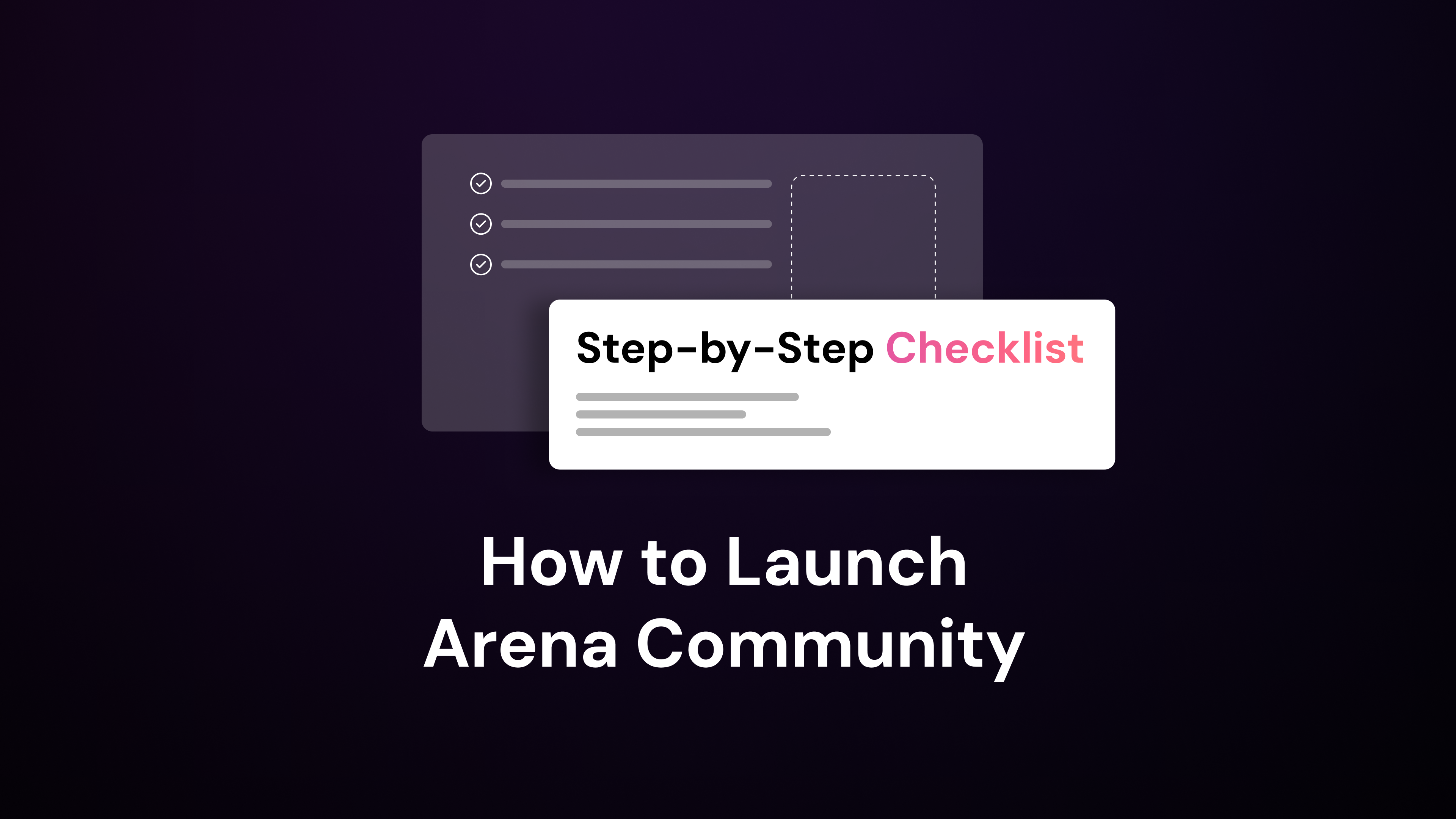A community manager for non-profits is crucial for building and engaging a strong supporter base. You might wonder what community managers do and why they are essential for non-profit organizations. The role can vary depending on the type of community they manage, and understanding these differences can help you determine the type of community manager for non-profits your organization needs.
Whether you’re looking to increase your non-profit’s visibility or build a dedicated community of supporters, knowing the specifics can guide your hiring process. Let’s explore the key skills and responsibilities of community managers for non-profits.
What Essential Skills Do Non-Profit Community Managers Need?
A common concern is how to engage supporters and keep them motivated. Let’s dive into the specific skills that can help you tackle these challenges.
How Important Are Communication Skills?
- Ability to articulate the organization’s mission and values: Clearly conveying what the organization stands for and its goals is crucial. This helps align everyone’s efforts and ensures all communications reflect the organization’s core values.
- Proficiency in written and verbal communication: Whether drafting emails, writing social media posts, or speaking at events, your communication must be clear, engaging, and professional. This ensures that your message is understood and well-received by diverse audiences. For more insights into effective communication, check out this ultimate guide to audience engagement.
- Active listening and empathy: Understanding the needs and concerns of your community members is vital. You can build stronger connections and address issues more effectively by actively listening and showing empathy. Learn more about building thriving online communities to enhance your communication skills.
Why Is Strategic Thinking Crucial?
- Developing community engagement plans: You should create detailed plans that outline how to engage with your community. This includes setting goals, identifying key activities, and determining the best channels for communication.
- Identifying growth opportunities: Find ways to expand the community and increase engagement. This might involve new initiatives, partnerships, or leveraging trends that align with the organization’s mission.
- Aligning community initiatives with organizational goals: Ensure that all community activities support the organization’s broader objectives. This alignment helps maximize impact and demonstrate the value of community efforts to stakeholders.
How Do You Build Strong Relationships?
- Networking and partnerships: Building a network of supporters, volunteers, and partners is crucial. These relationships can provide resources, amplify your message, and open up new opportunities for the organization. Explore effective community tactics and tools to strengthen your networking efforts.
- Fostering a sense of belonging among community members: Create an inclusive environment where members feel valued and connected. This can be achieved through regular interactions, recognizing contributions, and providing opportunities for members to engage meaningfully.
- Conflict resolution and mediation: Conflicts can arise in any community. Your ability to mediate disputes and find amicable solutions helps maintain a positive and collaborative atmosphere.
Why Have a Dedicated Community Manager for Non-Profits?
One of the biggest fears is whether investing in a community manager will pay off. Let’s explore the benefits to see why it’s worth it.
How Can You Increase Engagement and Retention?
- Building long-lasting relationships with supporters: A dedicated community manager focuses on nurturing relationships with supporters. This involves regular communication, recognizing contributions, and creating opportunities for meaningful involvement. Enhancing virtual community engagement boosts retention. Maintaining these connections ensures that supporters feel valued and remain committed to the organization over time.
- Encouraging active participation and volunteerism: Active participation is key to a thriving community. A community manager can organize events, create engaging content, and facilitate discussions that encourage members to take part. By fostering a sense of involvement, you can motivate supporters to volunteer their time and skills, which is vital for the organization’s operations and outreach efforts.
How Does It Enhance Brand Awareness and Reputation?
- Consistent messaging and brand voice across channels: Consistency in messaging helps build a strong brand identity. A community manager ensures that all communications, whether on social media, emails, or during events, align with the organization’s mission and values. This uniformity helps in creating a recognizable and trustworthy brand image.
- Showcasing the organization’s impact and success stories: Highlighting the positive outcomes of your work can inspire and attract more supporters. A community manager can share success stories, testimonials, and impact reports that demonstrate the tangible benefits of the organization’s efforts. This not only boosts morale within the community but also enhances the organization’s reputation externally.
How Does It Improve Fundraising and Resource Mobilization?
- Identifying potential donors and sponsors: Effective community management involves understanding the interests and motivations of your supporters. A community manager can identify individuals and organizations likely to contribute financially. By building relationships with these potential donors and sponsors, you can secure the necessary funds to support your initiatives.
- Leveraging community support for fundraising campaigns: Mobilizing the existing community is a powerful way to drive fundraising efforts. A community manager can organize campaigns encouraging members to donate, participate in fundraising events, or even start peer-to-peer fundraising initiatives. Leveraging the collective power of the community can significantly enhance your fundraising capabilities and ensure the sustainability of your programs.
How Does Community Management Work in Non-Profits?
Every non-profit worries about aligning their community efforts with their mission. Let’s look at how you can ensure alignment and efficiency.
How Do You Develop a Community Strategy Aligned with the Organization’s Mission?
Creating a community strategy starts with understanding your organization’s core mission. Your strategy should reflect your non-profit’s goals and values. Begin by outlining clear objectives for community engagement. These include increasing volunteer participation, enhancing donor relationships, or spreading awareness about your cause. Ensure that every planned activity and initiative supports these objectives. This alignment keeps your community efforts focused and impactful.
How Do You Identify and Understand Your Target Audience?
Knowing who you are engaging with is key. Analyze demographics, interests, and behaviors to identify your target audience. Use surveys, social media insights, and feedback forms to gather this information. Understanding your audience helps you tailor your messages and activities to their needs and preferences. It also aids in segmenting your community for more personalized interactions, which can lead to higher engagement and satisfaction. For a deeper understanding, explore engagement strategies to identify your audience better.
How Do You Create and Curate Engaging Content?
Content is the backbone of community engagement. Develop a content calendar that includes a mix of informational, inspirational, and interactive posts. Share stories of impact, updates on projects, and calls to action. Use various formats like articles, videos, infographics, and polls to keep the content diverse and engaging—curate content from trusted sources that align with your mission to provide additional value to your community members.
How Do You Moderate and Facilitate Discussions?
Active moderation ensures a positive and respectful environment. Safer online communities help enhance your moderation efforts. Set clear community guidelines and enforce them consistently. Facilitate discussions by asking open-ended questions, encouraging members to share their experiences, and highlighting valuable contributions. Respond promptly to comments and messages to show that you value member input. Address conflicts and issues swiftly to maintain harmony within the community.
How Do You Analyze Community Metrics and Insights?
Regularly review community metrics to gauge engagement and growth—track metrics such as active members, post-interactions, and event participation. Use analytics tools to gain insights into what content and activities resonate most with your audience. This data helps in understanding the effectiveness of your community strategy and identifying areas for improvement. For real-time insights, explore real-time audience engagement.
How Do You Continuously Refine the Community Management Approach?
Community management is an ongoing process. Use the insights gathered from your metrics to refine your approach. Experiment with new ideas and activities to keep the community dynamic and engaging. Solicit feedback from members to better understand their needs and preferences. Adjust your strategies based on this feedback and your organization’s evolving goals. This continuous refinement ensures that your community remains vibrant and aligned with your mission.
What Tools Do Non-Profit Community Managers Need?
Choosing the right tools can be daunting, especially when resources are limited. Here are some essential tools that can make your job easier.
Why Use Social Media Management Platforms?
Managing multiple social media accounts can be overwhelming. Social media management platforms like Hootsuite and Sprout Social streamline this process. These tools allow you to schedule posts, track engagement, and manage all your social media channels from one dashboard. They also provide analytics to help you understand which types of content resonate most with your audience, making it easier to refine your strategy. Learn how to break free from social media and build your community.
Why Is CRM Software Vital?
CRM software is vital for keeping track of interactions with supporters, donors, and volunteers. Tools like Salesforce or HubSpot help you manage contact information, track communication history, and segment your audience for targeted outreach. With a CRM, you can automate follow-ups, send personalized messages, and maintain a comprehensive view of each supporter’s journey with your organization.
How Can Email Marketing Tools Help?
Email remains a powerful way to communicate with your community. Platforms like Mailchimp or Constant Contact enable you to create and send newsletters, fundraising appeals, and event invitations. These tools offer templates, segmentation options, and analytics to track open and click-through rates. This ensures your messages are not only visually appealing but also reach the right people at the right time.
Why Use Event Management and Ticketing Platforms?
Organizing events is a key aspect of community engagement. Event management platforms like Eventbrite or Cvent simplify the process of planning, promoting, and managing events. These tools handle everything from ticket sales to attendee registration and post-event surveys. They also integrate with your CRM and email marketing tools, helping you track who attended and follow up accordingly.
What Role Do Analytics and Reporting Tools Play?
Understanding the impact of your efforts is crucial. Analytics tools like Google Analytics or Tableau provide insights into website traffic, user behavior, and engagement metrics. These tools help you track your campaigns’ performance and identify improvement areas. With detailed reports, you can make data-driven decisions and demonstrate the value of your community management efforts to stakeholders.
Why Use Collaboration and Project Management Software?
Effective community management often involves teamwork. Collaboration tools like Slack or Microsoft Teams facilitate communication among team members, while project management software like Asana or Trello helps you keep track of tasks and deadlines. These tools ensure everyone is on the same page and that projects move forward smoothly. They also allow you to assign tasks, set priorities, and monitor progress in real-time.
How to Measure the Success of Non-Profit Community Management
Measuring success can feel overwhelming, but it’s essential to understand what’s working. Let’s break it down into manageable steps.
What KPIs Should You Define?
To gauge the effectiveness of your community management efforts, start by defining clear Key Performance Indicators (KPIs). These metrics will help you track progress and identify areas that need attention.
- Engagement rates (likes, comments, shares): Monitor how often community members interact with your content. High engagement rates indicate active participation and interest. Track likes, comments, and shares on social media posts and other platforms to understand what resonates with your audience.
- Community growth and retention: Measure the number of new members joining your community and how many stay over time. Growth metrics show your reach, while retention rates indicate the community’s ability to keep members engaged. A thriving community grows steadily and retains its members, reflecting satisfaction and ongoing interest.
- Conversion rates (volunteers, donors): Track the number of community members who take desired actions, such as volunteering or donating. Conversion rates help you understand the effectiveness of your calls to action and the overall impact of your engagement strategies. High conversion rates suggest that community management successfully motivates members to support your cause.
Why Conduct Regular Assessments?
Regular assessments provide insights into how well your community management strategies are working. Use these evaluations to make informed decisions and adjustments.
- Analyze community metrics and insights: Learn how to track audience engagement effectively. Use analytics tools to gather engagement, growth, and conversion rate data. Look for trends and patterns that can inform your strategy. For example, identify which types of content generate the most interaction or which campaigns lead to the highest conversion rates.
- Gather feedback from community members: Direct feedback from your community is invaluable. Use surveys, polls, and direct conversations to understand their needs, preferences, and concerns. This feedback helps you tailor your approach to better meet your members’ expectations and interests.
- Evaluate the impact of community initiatives: Assess the effectiveness of specific initiatives and campaigns. Determine whether they achieved their goals and contributed to your overall mission. For example, if you launched a volunteer recruitment drive, evaluate how many new volunteers joined and how engaged they are. This evaluation helps you understand what works and doesn’t, guiding future efforts.
How Do You Adapt and Optimize?
Continuous improvement is key to successful community management. Use the insights gained from your assessments to refine your strategies.
- Identify areas for improvement: Look for aspects of your community management that could be more effective. This might include content types that receive low engagement, communication channels that aren’t reaching your audience, or events that don’t attract participation. Identifying these areas allows you to focus your efforts where they are needed most.
- Implement data-driven changes: Use the data and feedback you’ve gathered to make informed adjustments. For instance, if you notice that video content performs better than text posts, consider increasing your use of videos. If feedback indicates that members want more networking opportunities, organize events to facilitate connections.
- Continuously monitor and refine the community management strategy: Community management is ongoing. Regularly review your KPIs and assessments to ensure your strategies remain effective. Stay flexible and be prepared to make changes as needed. This continuous monitoring and refinement help you maintain a vibrant and engaged community that supports your non-profit’s mission.
Is Investing in a Community Manager Worth It for Non-Profits?
Investing in a community manager offers several tangible benefits for non-profits. Here’s how a dedicated community manager can make a significant difference:
- Builds long-term relationships with supporters: A community manager nurtures and maintains connections. Regular interactions, personalized communication, and recognizing contributions help build trust and loyalty. These long-term relationships are vital for sustaining support and engagement over time.
- Increases brand awareness and trust: Consistent and clear communication across various channels ensures that your non-profit’s mission and values are well understood. A community manager ensures that the messaging remains uniform, which helps build a recognizable and trustworthy brand. This consistency enhances the organization’s reputation and attracts more supporters.
- Drives engagement and volunteerism: Active engagement is key to a vibrant community. A community manager organizes events, creates engaging content, and facilitates discussions encouraging members to participate. This active involvement not only keeps the community dynamic but also motivates members to volunteer their time and skills, which is crucial for the organization’s operations.
- Supports fundraising efforts: Identifying and cultivating relationships with potential donors and sponsors is a significant part of a community manager’s role. By understanding the interests and motivations of your supporters, a community manager can tailor fundraising campaigns to resonate with them. This targeted approach increases the likelihood of successful fundraising efforts.
- Enhances the organization’s impact and reach: A well-managed community amplifies its message and extends its reach. Through strategic partnerships, networking, and leveraging the power of the community, a community manager can help the organization make a greater impact. This expanded reach not only brings in more supporters but also increases the overall effectiveness of the non-profit’s initiatives. For more on this, explore the concept of a community flywheel for growth.
Take the Next Step with Arena
Understanding the role of a community manager and the essential skills and tools needed is crucial for non-profits aiming to build and engage their communities effectively. Arena offers AI-driven solutions to enhance your community management efforts, from real-time content updates to advanced analytics and personalized interactions.
By leveraging Arena’s comprehensive suite of tools, you can streamline your community engagement, boost participation, and drive meaningful connections with your supporters. Whether you need to manage social media, facilitate group conversations, or analyze community metrics, Arena has you covered.
Sign up now to explore how Arena can transform your community management strategy and help your non-profit achieve its mission more effectively. Visit Arena’s pricing page to get started.



